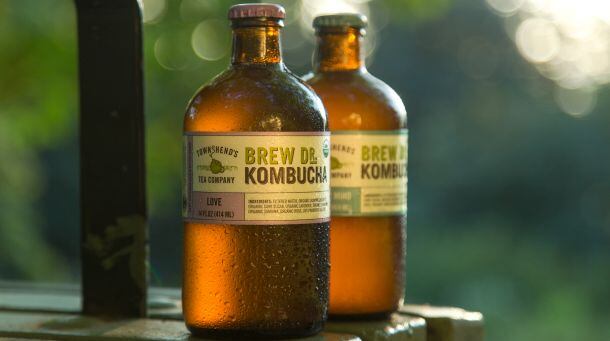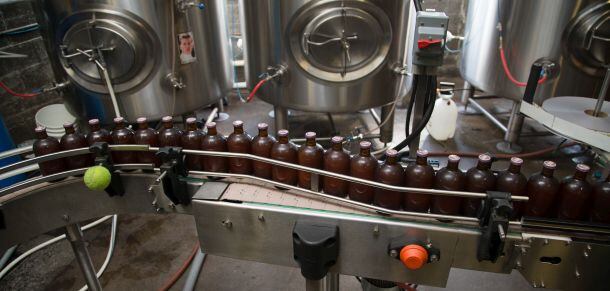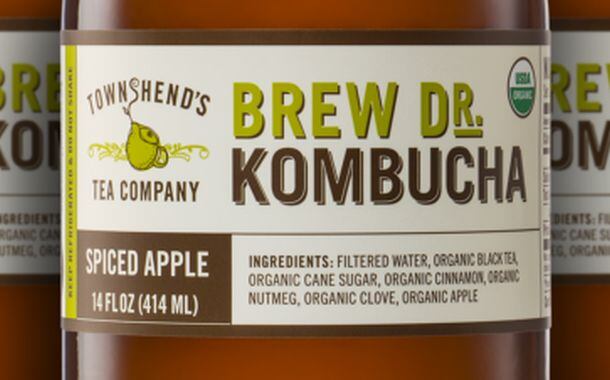“It’s still such a young industry” says Matt Thomas, founder of Oregon-based organic kombucha maker Brew Dr Kombucha, who first got into the kombucha (fermented tea) market in 2008 when customers at the chain of tea houses he ran started asking for it.
“I just saw a report saying that only 4% of the US population knows what kombucha is, so there is so much potential to raise awareness and grow, because the people that are buying it are buying a lot, and velocity is good.
“We did around $1.9m in 2012, then $4.1m in 2013, and by 2014 we saw an industry report that said we were the third largest kombucha company in the natural channel and that’s when I really woke up to the opportunity.
"This year (2016) it looks like we’re going to hit around $11m in sales and we recently got $7m in bank debt to open a 50,000sq ft facility in Tualatin, OR [which coupled with the 10,000 sq ft of production space at the Milwaukie Ave, Portland HQ amounts to a total of 60,000 sq ft of production space].
“I’d say 40% of our business is still Oregon and Washington, and about 10% is in Canada, but we’re in at least 40 states in the US in retailers from Costco and Target to Kroger and Safeway, and we’re looking at a big expansion in 2017 and 2018.”
We have a tea-first mentality
Retailers, meanwhile, are devoting more space to kombucha and other fermented beverages, says Thomas, a tea aficionado who says Brew Dr came at the market from a slightly different angle than some of the other players.
“We have a tea-first mentality, so we don’t use any flavorings or juices, just great tea – in lots of different varieties – and then we add herbs, spices, nettles, fruits, some cane sugar, and live cultures, and that’s it. We don’t add anything after the fermentation process, and every batch we’ve brewed was born of an original starter culture that an employee of mine brought from home.
“It’s a matter of personal preference, but ours has a cleaner flavor profile, less juicy and sweet.
“I’d say in the natural channel, they have 3-4 national brands and 3-5 regional brands in their kombucha sets whereas in conventional they have maybe 4-5 national brands, but because of our craft and authenticity, we can still win against those strong regional brands."


One of the fastest-growing segments in the functional beverages category, kombucha is tea fermented with live bacteria and yeast that creates carbon dioxide, alcohol and acetic acid, and has a fizzy, slightly vinegary taste.
We’ve developed a proprietary method that enables us to make authentic raw kombucha and still control the abv
But how does he control the alcohol content in his product to ensure that it remains below the legal 0.5% abv threshold [tens of thousands of kombucha bottles were pulled from shelves in 2010 after it emerged they exceeded the legal alcohol limit, and some players argue that this remains an ongoing problem]?
The Alcohol and Tobacco Tax and Trade Bureau (TTB) for example, notes on its website that refrigeration is “not an adequate method" of ensuring that the alcohol content will not increase after it leaves your plant “because you cannot control whether the product will be refrigerated after removal,” and says firms, “must use a method of manufacture (such as pasteurization) that will ensure that the alcohol content of the beverage will not increase while in the original container after removal.”
KeVita, meanwhile, says it has perfected a filtration process to get all the yeast out of its Master Brew Kombucha range prior to bottling.
Says Thomas: “We’ve developed a proprietary method that enables us to make authentic raw kombucha and still control the abv; but we’re not pasteurizing the product – we also don’t need to do that for food safety reasons because the product has a pH of 2.8-pH3 [ie. quite acidic], so harmful bacteria can’t grow, it’s a natural form of food preservation..
“I can’t talk about our process [to control abv] at this stage because it gives us a strategic advantage, but I think it’s really important that the industry collaborates when it comes to truth in labeling and monitoring. We’re all consumers and you want to be able to rely on what manufacturers say on the label.”

Brew Dr founder Matt Thomas has thus far relied on a local producer loan from Whole Foods Market followed by bank loans to fund the business because he doesn’t want to dilute his ownership until he has to. However, he’s now exploring a variety of options given the brand’s rapid growth.
“Looking at the next level of expansion, I’m in conversations now about different options, likely a little more bank debt and some private equity or strategic partner capital, but still a minority interest.”
The whole industry has got to work together so no one player gives the whole industry a bad name
As for recent reports that sugar levels in many kombucha brands also exceed the levels stated on the Nutrition Facts panel, this is harder to understand from a technical perspective, he says.
“I think this is probably just a byproduct of a very young industry, maybe when they launched they just copied their competitors’ Nutrition Facts panels and didn’t take the time to find a food lab to verify everything. But the whole industry has got to work together so no one player gives the whole industry a bad name.”
*SPINS data covering MULO (conventional, multioutlet), natural, and specialty gourmet channels in the 52 weeks to October 2, 2016. The conventional channel (MULO – multi-outlet) logged the fastest growth at 41.3% YoY, compared with the natural channel at 17.9% and the specialty gourmet channel at 25.2%.
**According to SPINS: "The REFRIGERATED KOMBUCHAS & FERMENTED BEVERAGES subcategory not only includes refrigerated and shelf stable RTD kombucha but also includes other fermented beverages such as water kefirs, coconut water kefirs, and kvass. Dairy kefir is not coded in this subcategory. Many of the products in this subcategory feature probiotics. Kombucha and other fermented shots are coded here as well. Switchels are coded in another subcategory."

